-
Notifications
You must be signed in to change notification settings - Fork 2
1990 1993 Wheatley
The new chairman of Cal Poly’s computer science department hopes to bring empathy and understanding to an area of academia traditionally associated with otherwise unemotional machines.[^16] Professor Patrick Wheatley, a 20-year faculty member is beginning his three-year term after being appointed by Dean of Engineering, Peter Y. Lee.
Wheatley said that he wants to use a people-oriented approach to his position. “I feel that I’m a people person,” said Wheatley. “What I want to do is to help students and faculty achieve their goals and be happy with their work.” Wheatley said that he’s well suited to the task because he feels no conflict between either the administration, the faculty or the students. “I will represent the faculty and students to the administration and explore each case individually and with consideration rather than be completely bound by policy.”
“I must be fair and understand each student’s problems and emotions rather than just quote the rules. I want to be sure that the department and university do not expand beyond their means.”
“I don’t want to see us keep growing without funding from the state because that creates a stressful situation. The students have stress over CAPTURE as everything is full, and the faculty feels pushed because of all the additional students. It is not a good situation.”
Wheatley, who succeeds professor Roger Camp at the post, is a native of New York City who began his first nine years at Cal Poly as a member of the mathematics department. He taught a variety of courses until joining the computer science faculty in 1979. Since 1987, he has served as associate department chairman and class scheduler and was previously Graduate Program Coordinator and chariman of the Tenure Committee.
After earning his B.S. degree from St. Mary’s College in Techny, Ill. in 1956, Wheatley went on to receive a M.S. degree in mathematics from the University of Chicago in 1963. He worked for NASA at the Manned Spacecraft Center in Houston as an engineer for three years before going on to earn a Ph.D. in mathematics at the University of Houston in 1970.
Wheatley lives in San Luis Obispo, with his wife, Jo Ann, who is a member of Cal Poly’s crop science faculty. He said he is happy with his new position and appreciates “ the endorsement of my colleagues and the Dean.”
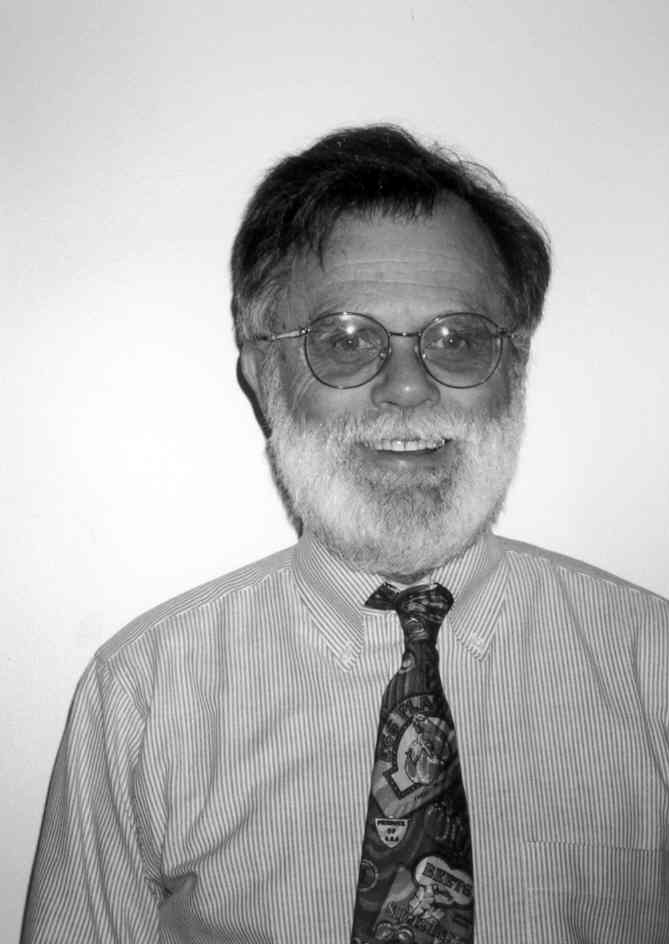
Patrick Wheatley, Computer Science Department Chairman, and joint author with Curtis Gerald of “Applied Numerical Analysis”, Addison Wesley, 7 th edition.
In 1990, the Csc department had about 490 undergraduates and 60 graduate students. The Computer Engineering program which we offer jointly with Electrical Engineering had about 200 students enrolled and is scheduled to grow to about 330. With 28 full time faculty positions, we are the largest department in the School of Engineering.
What has been the biggest change in computing over the past 32 years? Two things immediately come to mind. First the Internet, and second, the increased speed and storage capacity with the reduced cost and size of computers in 2002.
Perhaps one of the greatest inventions of our time is the Internet. Without a doubt, the net has had a profound effect on almost every aspect of our lives. The formation of the Internet has changed the way we do business, communicate, entertain, retrieve information, and even educate ourselves. Nevertheless, the Internet might not have ever materialized if it had not been for some innovative thinkers from the Advanced Research Projects Agency, who created `"ARPANET.`" In collaboration with several educational and research institutions, the agency created the packet-switching technologies that form the basis of the Internet today.
-
1957: USSR launches Sputnik I, the first artificial satellite.
-
1958: President Eishenhower reacts by forming two government agencies to advance space technologies, weapons and communication systems, National Aeronautics and Space Administration (NASA) and Advanced Research Projects Agency (ARPA).
-
1961: Leonard Kleinrock of MIT writes first paper on packet-switching theory.
-
1968: Bolt, Beranek, and Newman, Inc. are awarded $1,000,000 to begin ARPANET project.
-
1969: The first ARPANET connections are made. Nodes (hosts) are set as BBN builds each IMP machine, which is a Honeywell DDP-516 minicomputer with 12K memory, set with 50 kbps lines, which AT&T provides. Node 1: UCLA (September) Node 2: Stanford Research Institute (SRI) (October) Node 3: University of California Santa Barbara (UCSB) (November) Node 4: University of Utah (December). Two years later ARPANET increases to 15 nodes and 23 hosts.
-
1969: United States astronauts land on the moon.
-
1982: DOD declares TCP/IP as a standard. Thus, the first definition of an `"Internet`" is established as a connected set of networks, specifically those using TCP/IP.
-
1984: Domain Name System or DNS http://www.dns.net/dnsrd/ is introduced to identify the type of institution which represents the host. Six large domains were named: edu (education), gov (government), mil (military), com (commercial), org (organization), and net (network resources).
-
1986: National Science Foundation awards five supercomputer contracts: Cornell Theory Center (CTC), the John Von Neumann Center at Princeton (JVNC), the National Center for Supercomputing Applications (NCSA) at the University of Illinois, the Pittsburgh Supercomputing Center (PSC), the San Diego Supercomputer Center (SDSC) at the University of California, San Diego and the General Atomics Company and NSF manages the NSFNET backbone network.
-
1991: NSFNET decides to lift commercial restrictions on the use of the network, thus opening a means for electronic commerce. World-Wide Web (WWW) is released by CERN http://cern.web.cern.ch/CERN/ in Geneva, Switzerland. British researcher, Tim Berner-Lee creates HyperText Markup Language (HTML), which use specifications for URLs or Uniform Resource Locators, for web addresses.
-
The Web as we know it is born! Yahoo!, which stands for `"Yet Another Hierarchical Officious Oracle`" is founded by two Ph.D. students from Stanford, Jerry Yang and David Filo.[^17]
In 1990, Cal Poly’s Bachelor of Science degree program in Computer Science has been reaccredited by the Computing Sciences Accreditation Board. CSAB evaluations are conducted under criteria designed for computer science programs distinct from programs in other disciplines such as information systems and information sciences.
To qualify for evaluation, a baccalaureate computer science program must be designed to prepare its graduates for professional employment and progressive careers as computer scientists. An accredited program meets or exceeds the CSAB criteria for faculty, curriculum, laboratory and computing resources, students and institional support.
Experts from all 20 campuses of the California State University gathered at Cal Poly in June, 1990 for the Artificial Intelligence Symposium. The gathering, a first for the state university system, attracted CSU faculty, staff and graduate students from all academic fields.[^18]
Computer Science Professor Leonard Myers was director of the conference. He organized the event under a $32,000 grant from the CSU chancellor’s office.
Networking of AI specialists from all universities is important because “it helps us in the research we do, it helps us in the way we think about applications in AI,” Myers said.
Participants heard lectures by leading national authorities and discussed the impact of artificial intelligence on the CSU’s instructional programs and the range of research undertaken by CSU faculty members.
The banquet speaker was Dr. William Clancey of the institute of Research in Learning, Palo Alto, widely know for his work on expert systems in teaching. The keynote address was by Dr. Patrick Winston, director of the MIT’s Artificial Intelligence Laboratory. Winston is recognized internationally as one of the most enthusiastic developers of AI techniques.
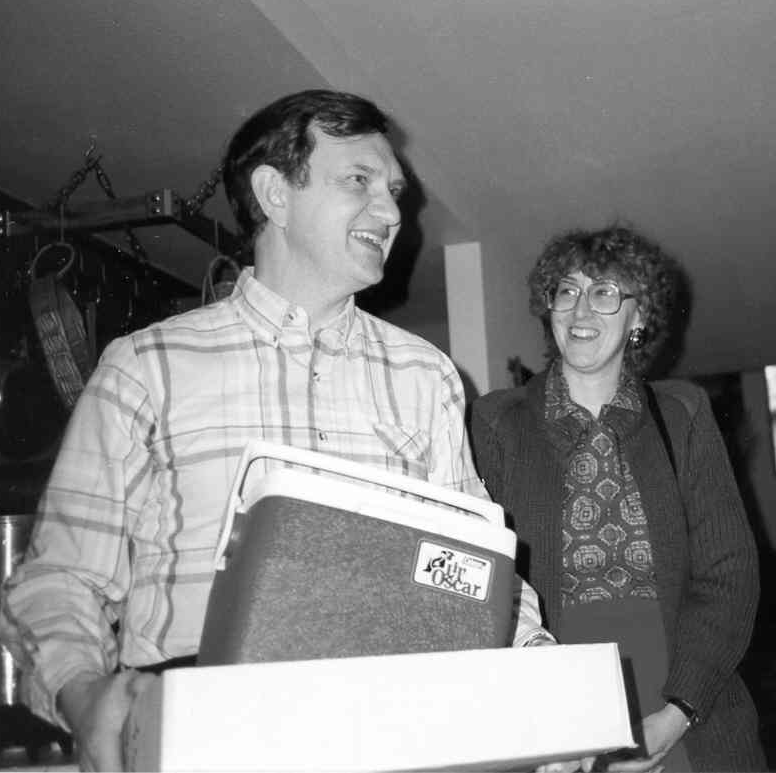
Len and Hope Myers at a faculty party.
Chris Buckalew joined the computer science faculty in the Fall of 1990. Buckalew is a recent graduate of University of Texas at Austin with a speciality of computer graphics. Gene Fisher will join the faculty winter quarter. His specialty is software engineering and human interface to computers.
Zane Motteler has been selected as a member of CSAC, the Computer Science Accreditation Commission and will be chairing an evaluation this year.
S. Ron Oliver was elected National Vice President of the Association for Computing Machinery (ACM) for a two year term, beginning July 1, 1990. ACM is the world’s largest educational and scientific society for computer professionals with more that 80,000 members. An ACM member since 1974, Oliver was chair of the ACM’s Special Interest Groups Board at the time of his election.
Clinton Staley, involved in a research project with the Civil Engineering Department and Caltrans, brings computer technology to manage highway congestion. In a sense what we do is “air traffic control systems for freeways,” plus some expert systems to assist in managing congestion and accidents.
Charles Dana and Zane Motteler have returned from sabbatical years in 1989-1990. Motteler worked at Lawrence Livermore laboratories on object-oriented programming. Dana spent his time working on programming tools for windowing environments.
Elmo A. Keller, with graduate student, Scott Laribeau, has completed a booklet on the MINIX development project. It is used as a continual development project for the MINIX operating system written by Andrew Tanenbaum. The booklet was written to increase student’s understanding of the internal structure and algorithms of MINIX, so they can easily modify the OS code. It includes tools, supplemental questions, special projects and companion diskettes.
Beginning summer 1990, Ada is replacing Modula-2 as the “core sequence” language for Csc majors. It will be phased into Csc 118, Csc 218 ( Fundamentals of Computer Science), and Csc 345 (Data Structures). It will be used for such courses as distributed systems, parallel processing, and real time control.
The department chose Ada because it presents basic concepts in a simple and consistent manner, has excellent support for software engineering and supports the concepts of tasks, generics and exceptions.
A bridge course assists students who have taken Pascal, Modula-2, or any other algol-type language at Cal Poly or at a community college. Computer science majors are also required to learn C or C++ and Unix.
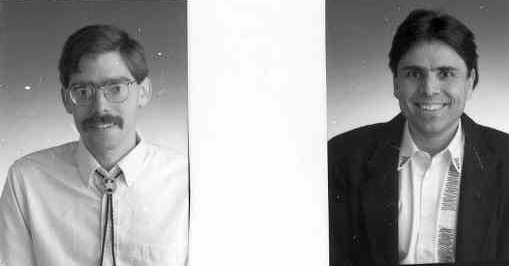
Left to right: Chris Buckalew, (1990) graphics and core sequence; Gene Fisher, (1991) Director graduate program, compilers, and software engineering.
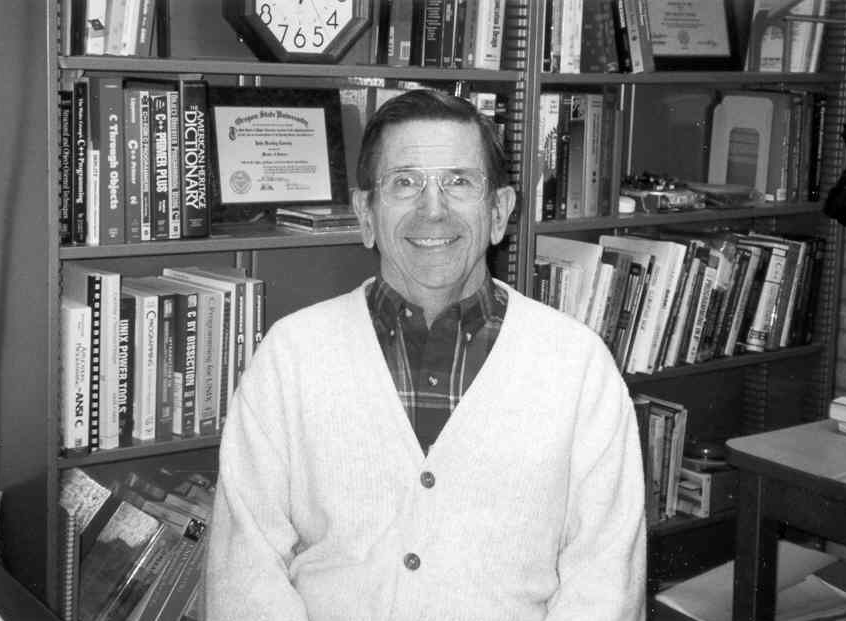
Professor John Connely in his office.
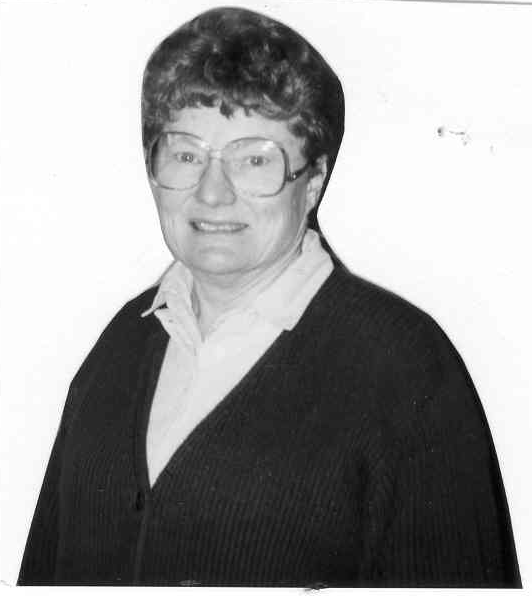
Professor Lois Brady teaches in the areas of discrete mathematics and computer science theory.